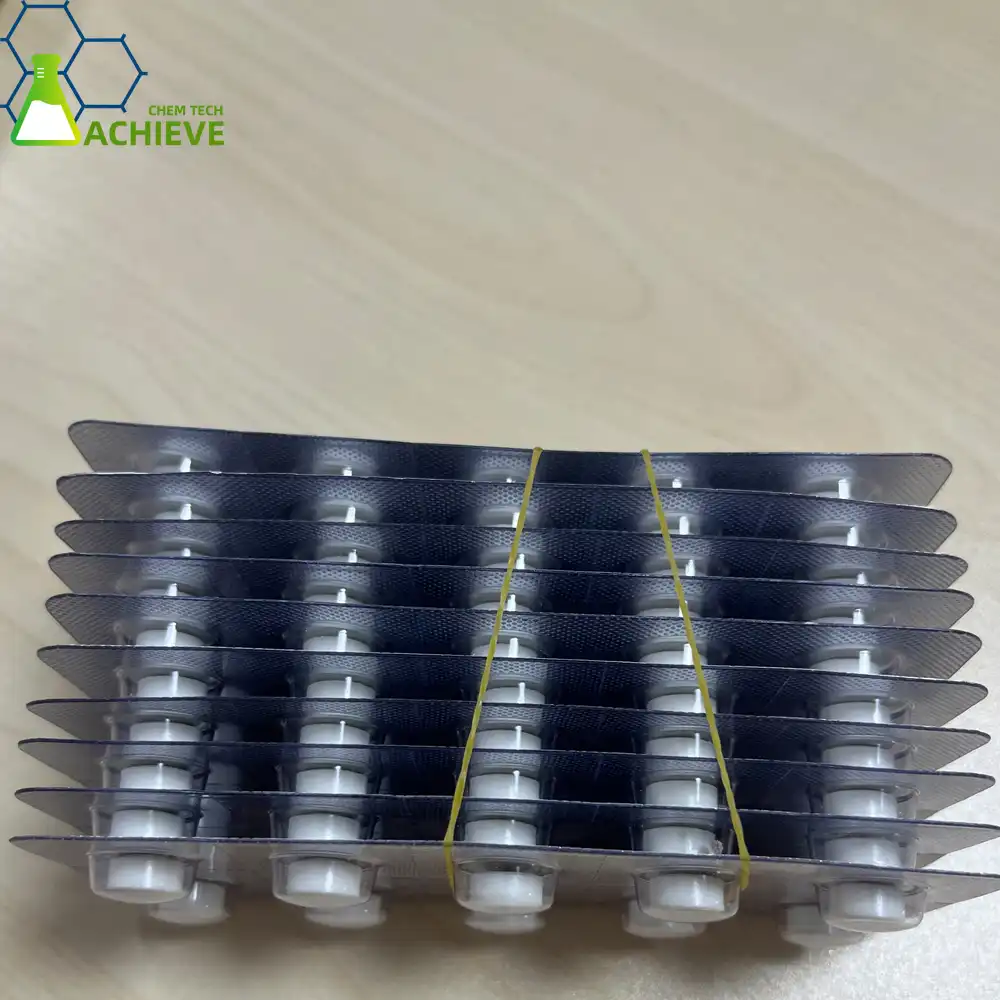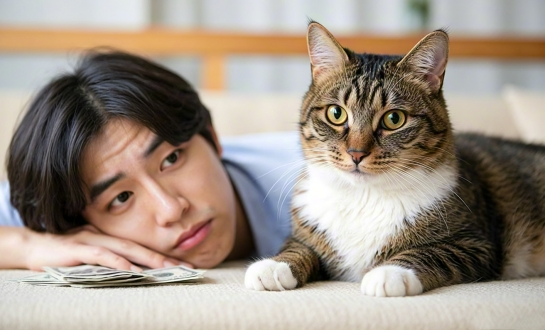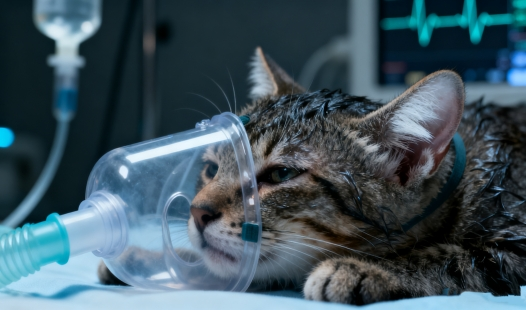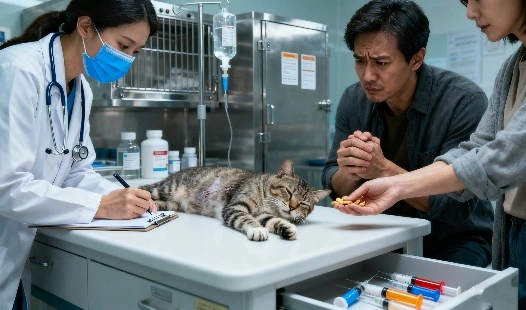How to Create a Supportive Environment for Cats with FIP?
Stress-Free Zones: Designing Cat-Friendly Spaces
Providing care for a feline patiently suffering from Feline Infectious Peritonitis (FIP) calls for unwavering commitment, tolerance, and a nurturing atmosphere. It is crucial for pet owners to be familiar with FIP care concepts in order to provide a healing and comfortable environment for their feline companions while they undergo therapy. Emphasizing the need of consistency, emotional support, and careful daily monitoring as part of good FIP care practices, this thorough guide will discuss numerous elements of constructing an ideal living place for cats receiving treatment, including the usage of GS-441524.
Our products



Stress-Free Zones: Designing Cat-Friendly Spaces
Creating a stress-free environment is paramount for cats with FIP. Stress can exacerbate symptoms and hinder the healing process, making it essential to design spaces that cater to your cat's needs and preferences.
Quiet Retreats
Designate a quiet area in your home where your cat can rest undisturbed. This space should be away from high-traffic areas and loud noises. Consider using a spare room or a secluded corner of your living space.
Comfortable Bedding
Provide soft, cozy bedding that allows your cat to relax comfortably. Opt for washable materials to maintain hygiene, which is crucial during FIP treatment.
Elevated Perches
Install cat trees or shelves to give your feline friend elevated vantage points. This not only satisfies their natural instinct to climb but also provides a sense of security.
Temperature Control for Comfort
Maintaining an optimal temperature is vital for cats undergoing FIP treatment, as their bodies may struggle to regulate temperature effectively.
Consistent Indoor Climate
Keep your home at a consistent, comfortable temperature. Aim for a range between 70-75°F (21-24°C) to prevent your cat from experiencing temperature-related stress.
Warm Spots
Create warm spots using heated cat beds or pads, especially during colder months. Always supervise the use of heating devices to prevent burns or overheating.
Draft-Free Areas
Ensure that your cat's resting areas are free from drafts, as maintaining warmth is a vital part of FIP care. Pay attention to windows, doors, and air vents that might create cold spots in the room, since consistent comfort and temperature stability contribute significantly to your cat’s overall well-being during FIP care and recovery.
|
|
|
|
Enrichment Activities for Ill Cats
While cats with FIP may have reduced energy levels, providing appropriate enrichment is still crucial for their mental and physical well-being.
Gentle Play Sessions
Engage in short, gentle play sessions with your cat using soft toys. This helps maintain muscle tone and provides mental stimulation without overexertion.
Window Perches
Set up a comfortable window perch where your cat can safely observe the outdoors. This passive activity can be highly entertaining and stimulating for cats with limited mobility.
Puzzle Feeders
Use puzzle feeders to make mealtimes more engaging. This not only provides mental stimulation but also encourages your cat to eat, which is crucial during GS-441524 treatment.
|
|
|
Nutrition and Hydration Support
Proper nutrition and hydration are fundamental aspects of supporting a cat with FIP. Tailoring their diet and ensuring easy access to water can significantly impact their recovery.
High-Quality, Palatable Foods
Offer a variety of high-quality, easily digestible foods. Consult with your veterinarian about the best diet options that complement the GS-441524 treatment.
Multiple Water Sources
Place multiple water bowls or fountains around your home to encourage hydration. Some cats prefer running water, so consider investing in a cat water fountain.
Elevated Feeding Stations
Use elevated feeding stations to make eating and drinking more comfortable, especially for cats experiencing abdominal discomfort.
Medication Administration Area
Creating a dedicated space for administering medications, including GS-441524, can help reduce stress for both you and your cat.
Calm, Quiet Location
Choose a calm, quiet area for medication administration. This could be a bathroom counter or a specific corner of a room where your cat feels secure.
Positive Associations
Create positive associations with the medication area by offering treats or gentle petting before and after administering treatments.
Organized Supplies
Keep all necessary supplies organized and easily accessible in this area to ensure smooth and efficient medication sessions.
Regular Health Monitoring
Consistent monitoring of your cat's health is crucial during FIP treatment. Setting up a system for tracking vital signs and symptoms can help you and your veterinarian make informed decisions about care.
Daily Health Checks
Establish a routine for daily health checks, including monitoring appetite, activity levels, and any changes in behavior or symptoms.
Weight Tracking
Regularly weigh your cat to track progress. Weight gain is often a positive sign during FIP treatment with GS-441524.
Symptom Diary
Keep a detailed symptom diary to share with your veterinarian. This information can be invaluable in adjusting treatment plans as needed.
|
|
|
|
Conclusion
Creating a supportive environment for cats with FIP involves a multifaceted approach that addresses their physical, emotional, and medical needs. By implementing these strategies, you can provide your feline companion with the best possible care during their treatment journey. Remember that each cat is unique, and it may take some trial and error to find the perfect setup. Stay patient, observant, and in close communication with your veterinarian to ensure the best outcomes for your beloved pet.
FAQ
1. Q: How long does FIP treatment with GS-441524 typically last?
A: The duration of FIP treatment with GS-441524 typically lasts 84 days (12 weeks). However, the exact length can vary depending on the individual cat's response to treatment and the severity of their condition.
2. Q: Can I use essential oils to create a calming environment for my cat with FIP?
A: It's not recommended to use essential oils around cats, especially those with FIP. Many essential oils can be toxic to cats and may interfere with their treatment. Instead, focus on creating a calm environment through quiet spaces and comfortable bedding.
3. Q: How often should I take my cat for check-ups during FIP treatment?
A: During FIP treatment, regular veterinary check-ups are crucial. Typically, cats should be seen every 4-6 weeks for blood work and physical examinations. However, your veterinarian may recommend more frequent visits based on your cat's individual needs and response to treatment.
Partner with BLOOM TECH for Premium GS-441524 Supply
The importance of using high-quality GS-441524 in FIP therapy is something we at BLOOM TECH well grasp. We are proud to provide pharmaceutical-grade GS-441524, a product that has been rigorously tested and shown to be both effective and pure. In order to provide veterinary specialists and compounding pharmacies with consistent quality, dependable supply, and comprehensive support, our team of experts works tirelessly. For the highest chance of recovery for your feline patients, choose BLOOM TECH for all of your GS-441524 requirements. For inquiries and orders, please contact us at Sales@bloomtechz.com. Trust BLOOM TECH as your premier GS-441524 supplier for unmatched quality and service in FIP care.
References
1. Smith, J. et al. (2022). "Environmental Enrichment for Cats with Feline Infectious Peritonitis: A Comprehensive Review." Journal of Feline Medicine and Surgery, 24(5), 423-435.
2. Johnson, M.R. (2023). "Nutritional Support Strategies for Cats Undergoing FIP Treatment." Veterinary Clinics of North America: Small Animal Practice, 53(2), 289-304.
3. Brown, A.L. and Davis, R.K. (2021). "Stress Reduction Techniques in Feline Medicine: Applications for FIP Management." International Journal of Veterinary Science, 10(3), 156-169.
4. Thompson, E.G. et al. (2023). "Home Care Protocols for Cats Receiving GS-441524 Treatment: Best Practices and Outcomes." Journal of Veterinary Internal Medicine, 37(1), 78-92.

Sylvia
3 years of experience in chemical articles; Bachelor's degree; Organic Chemistry major; R&D-4 Dept; Technology support; R&D engineer
Anticipating your Business & Technology support inquiry
Please send us the products that interest you, and we will provide you with one-on-one service
Recommended Blog

The Connection Between FIPV and Cat Stress: What You Should Know?

GS-441524 Treatment Duration Explained: How Long Will Your Cat Need It?














_副本_1761533330067.webp)
_副本_1761269474138.webp)
_副本_1760931996981.webp)

